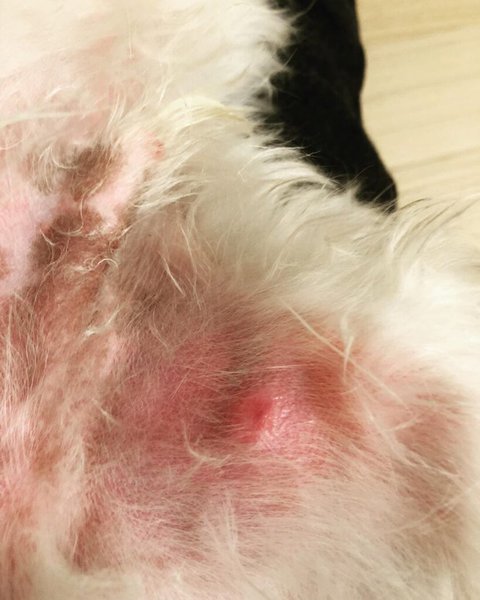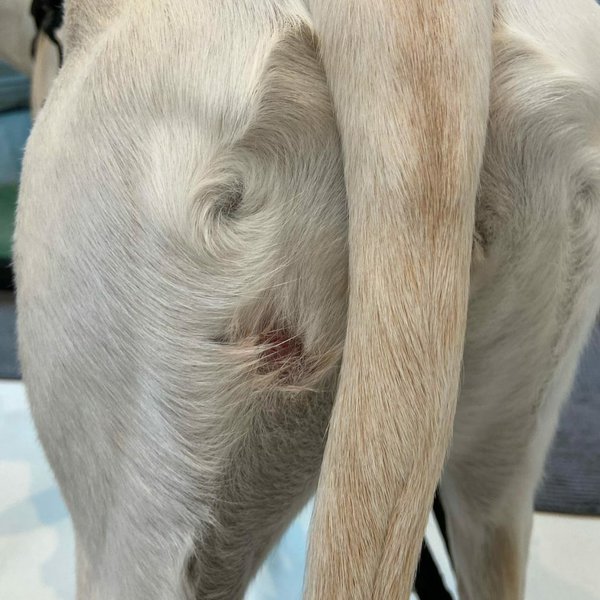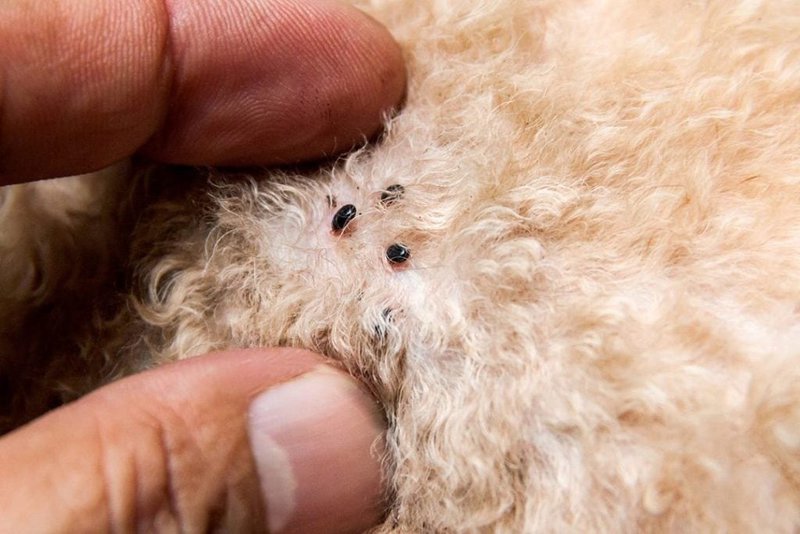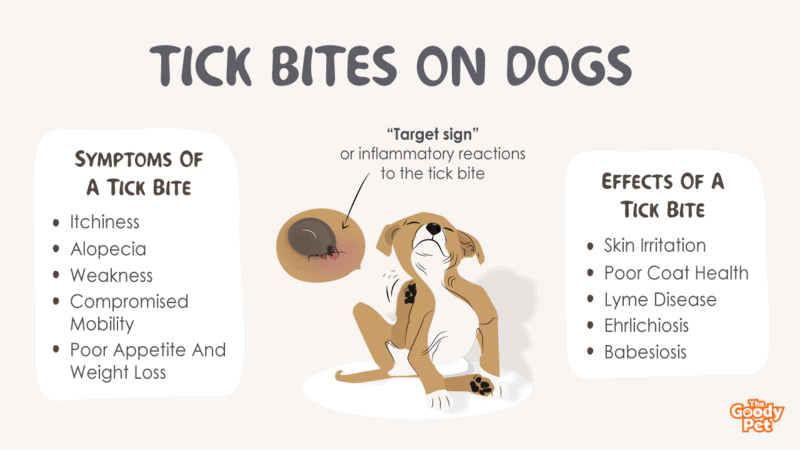Ticks are an absolute menace and can easily frustrate a dog parent. From the way they compromise the pooch’s aesthetics to all the diseases they carry, as a responsible dog parent, you cannot afford to ignore even a single tick on your dog’s coat.
Tick bites on dogs are something you should be worried about when it happens to your pooch. It is through learning how tick bites affect dogs, including the most common diseases transmitted by these parasites like Ehrlichiosis, that you can fully grasp the gravity of the situation ticks can cause.
We shall also take a closer look at the signs and symptoms of serious tick infestations in dogs. And most importantly, you will learn how to deal with these pesky creepy crawlies. Let’s get right to it.
When Should I Worry About A Tick Bite On My Dog?
You should start worrying about a tick bite on your dog as soon as you see one. Ticks are always bad news whether you find a lone ranger or your dog’s coat is overrun by the bloodsuckers.
So why should you be worried about tick bites on your pooch? Here are a few potential consequences of a tick infestation on your dog.
Skin Irritation And Infection
One of the earliest signs of a tick bite on a dog is irritation. The dog may scratch themselves intensely in a specific spot or all over their body with the latter happening with heavy infestations.
With time, the scratching could result in infections especially if the dog scratches so much that they leave open wounds on their skin.
Poor Coat Health
Another reason to worry about ticks on your dog is that they usually result in poor coat health. In addition to the possible skin infection, the constant skin irritation and scratching could result in hair loss for the dog.
The hair loss occurs either locally or may be widespread. In very severe cases, the dog’s coat may never grow back to normal.
Lyme Disease
Your dog could get sick from a tick bite if the tick is a carrier of pathogens in which Lyme disease is one of the most common illnesses.
The pathogens responsible are carried by the deer tick which can bite your dog if you happen to bring your dog out exploring outdoor areas like forests where the ticks live.
Lyme disease causes a number of issues including limb weakness and joint pain and swelling which will affect the dog’s mobility. The pooch may also develop a fever and enlarged lymph nodes.

Ehrlichiosis
Ehrlichiosis is another common infection carried by ticks and targeting dogs. This infection typically affects blood cells like red blood cells causing anemia. An anemic dog will be lethargic and may just prefer to relax all day.
Ehrlichiosis may also result in low platelet counts. In this case, the dog will bleed easily whether it is from the skin from the persistent scratching or even internally in their gastrointestinal tract.
Babesiosis
Babesiosis is another tick-borne infection targeting dogs that causes anemia. In this case, the anemia is due to hemolysis which is the breakdown of otherwise normal and healthy red blood cells.
This will cause symptoms of anemia, including weakness and lethargy as well as paleness on surfaces, such as the dog’s tongue, nose, and paw pads.
The hemolysis may also be associated with jaundice where you will notice yellow discoloration of your dog’s eyes, as well as mucous surfaces like their tongue and gums.
What Are The Symptoms Of A Tick Bite On A Dog?
The signs and symptoms of a tick bite in a dog depend on a number of factors including the type of tick, number of ticks, and pathogens that the tick may have passed to the dog.
Below are a few of the most common signs of a tick bite or tick infestation in a dog.
Itchiness
When ticks bite the dog for their blood meal, they irritate the skin and cause itchiness. The dog will scratch continuously as they seek relief. This will continue until the tick either falls off on its own or is removed.
Incessant scratching may eventually lead to bruising and skin lesions forming an open wound, resulting in a breeding ground for bacteria or an infection to set in.
Alopecia
Alopecia refers to the pathologic loss of fur from the dog’s coat. With tick infestations, this may either be in localized patches or generalized.
More often than not, alopecia occurs when the dog is infested by several ticks.
Weakness
Weakness commonly occurs in dogs after tick bites for a number of reasons. It can be from anemia caused by the blood-sucking parasites. The anemia can also be secondary to the many infections that ticks are known to spread among dogs.

Compromised Mobility
If your dog is suddenly unable to walk or hesitant to do so after a period of intense scratching and coat changes, ticks should be high on your list of possible causes.
The immobility is usually tied to Lyme’s disease and its symptoms, such as joint pain and swelling as well as muscle weakness.
Poor Appetite And Weight Loss
Loss of appetite and weight loss are generic signs and symptoms of heavy tick infestation in a dog. They can also be a result of the general discomfort, pain, and itchiness from the tick bites have on dogs.
Poor appetite and weight loss can also be due to any one of the diseases that ticks are known to carry and pass to dogs as covered previously.
What Does A Red Ring Around A Tick Bite On A Dog Mean?
A red ring around a tick bite on a dog is referred to as a “target sign” or the bullseye rash. The ring will have a pale core with a darker red, bumpy circular edge forming a halo around the core.
The red rings are best appreciated on less hairy surfaces like the dog’s ears. They are also easily visible on patches of the coat where the tick infestation has caused fur loss.
This “target sign” appearance is a manifestation of local inflammatory reactions to the tick bite. More often than not, this sign occurs after the dog is bitten by ticks that spread Lyme disease.
However, it is important to note that not all tick bites with the “target sign” are associated with Lyme disease.
Another possible reason for this appearance is an infected tick bite on the dog. There may also be pus from the red bumpy lesions later on, as the bite develops.

How Do You Treat A Tick Bite On A Dog?
The best way to treat a tick bite on a dog is by involving your vet. There is so much that can go wrong with tick infestations on your dog that it will be imprudent to rely entirely on home remedies.
Your vet will assess the dog’s coat as well as infected scratch and bite marks and determine the best way forward.
If there is localized infection, they will probably give topical antibiotics like Neosporin ointments to apply to the dog’s tick bite marks and open scratches. This will help not only deal with current infections but also prevent further skin infections.
The vet may also run blood tests in case there are systemic manifestations, such as anemia, fever, jaundice, and joint issues. Here, the specific pathogens found will dictate the treatment your vet will recommend.

What To Do If Tick Mouth Stays In?
If you find that some tick mouth parts remained stuck to the skin after the tick fell off or was removed, you have 2 options.
The first is to wait for the parts to be expelled spontaneously which will usually take a few days.
The second option is to take the dog to the vet to have the stuck mouth parts from the tick removed. This is important if the tick mouth parts remain in the skin for too long, as this can result in infections.
In addition to these 2 options, here are 4 other things that you should never do if you find a tick’s mouth or head stuck to your dog’s skin.
Don’t Dig Around
Digging around to try to pull the mouthparts out will often result in more trouble than good. It is unlikely that you will achieve the level of sanitation required to avoid contaminating the skin which means you leave your dog vulnerable to skin infections.
Don’t Use Petroleum Jelly
The use of petroleum jelly will unfortunately suffocate the dog’s skin and create the ideal environment for bacteria and other microscopic pathogens to thrive. Instead of applying the jelly, just clean the area and leave it open and airy.

Don’t Try To Burn It Out
Burning the tick head and mouth off is an absolute no-no. This is another home remedy that will almost inevitably result in more harm than good for your furry best buddy.
You may actually end up burning the dog’s fur and skin. Not only does this cause your pooch further discomfort but also exposes the skin to infections.
Don’t Try To Pull With Forceps
The tick’s mouth is usually embedded into the dog’s skin pretty tightly. Forcing it out using forceps by plucking and pulling may therefore not do much to help you remove the stuck parts.
If anything, you will probably end up removing just a bit of the tick head which makes the vet’s job that much harder when you eventually have to take the dog in for a professional consult.





